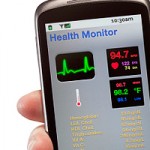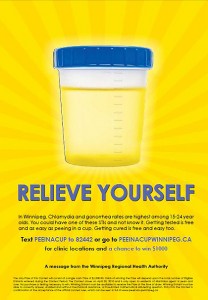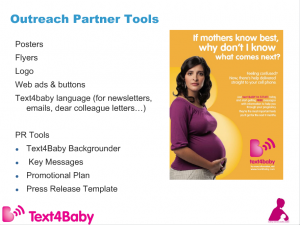 mHealth is a broad definition as any kind of device or service that facilitates the seamless flow of information over some form of mobile network (e.g. cellular, wireless, digital).
mHealth is a broad definition as any kind of device or service that facilitates the seamless flow of information over some form of mobile network (e.g. cellular, wireless, digital).
There are a lot of reasons to believe mHealth is going to raise healthcare standards.
- 5% of the people in the U.S. account for 50% of the total healthcare costs.
- 60 million people can benefit from a remote patient monitoring device to prolong their health
- $4 billion a years is the savings has been shown through mHealth devices and service by the The Center for Information Leadership Technology through: 1) REDUCTION IN UNCESSARY OFFICE VISITS ($3.610 Billion): Reducing face-to-face in-office visits and eliminating duplicate, unnecessary testing and 2) PATIENT TRAVEL: ($912 Billion): Eliminating 142 million unnecessary referral visits in the US every year
- By 2013, more people will access the internet through their mobile phone than their desktop
But people in heathcare require a lot of hard proof. Here are 6 case studies that prove mHealth ROI and better health outcomes.
1. JANSSEN (PSORIASIS 360): Launched a mobile phone app to help psoriasis patients track the severity of their condition. The index helped them know when to seek professional care and allowed their medical professional assess to the severity of their patient’s condition. Janssen also opened a Facebook page, which they moderated for regulatory reasons, to let patients tell personal stories and had over 30,000 posts and comments. According to Janssen, the investment in the mobile app overachieved ROI but more important delivered the right therapy to the right patient at crucial times.
2. CARITAS HOME CARE: Boston-based home healthcare agency used mobile health devices to enhance communications and data collection with its 150 mobile clinicians. Caritas documented how the mobile devices were able to save 19,200 hours or 98 hours per clinicians per year. Although Caritas didn’t release salaries of clinicians, if we estimated $50/hour, which would be conservative, Caritas saved $960,000. If the devices were $100 each for 150 clinicians at $15,000, which would also be conservative, the ROI would be 64-to-1.
3. WINNEPEG HEALTH AUTHORITY: Used SMS to get adults 18-24 tested for sexually transmitted infections (STIs), increase awareness of STI incidents and remove false perceptions about testing. Text the keyword PEEINACUP to the short code 82442 or go to http://www.peeinacupwinnipeg.ca for clinic locations and a chance to win $1,000. Over the course of the four-week campaign, more than 10,000 people visited the Web site and 825 people entered the contest, which is 1.2 percent of the total target population in Winnipeg.
4. CLEVELAND CLINIC: Used MedApps and an app-based solution called HealthPAL to remotely monitor patients with chronic diseases. Chronic disease patients are a high cost segment and are the patients most at risk. The results were:
- HEART FAILURE patients participating in the program were able to visit their doctor 27 percent more often to better detect problems that required medical attention
- DIABETIC patients were able to increase the number of days between their appointments by 71 percent.
- HYPERTENSION patients were able to do so by 26 percent.
5. BAPTIST HEALTH: The fifth largest employer in Arkansas, also used HealthPAL, to help decrease disease-related ER visits and hospitalizations and improve patient outcomes. After just 6 to 12 months, diabetes patients increased self-management behaviors for glucose medical compliance by 53 percent and decreased lipids and blood pressure trends. Diabetes often leads to other chronic condition so if a heath network can manage their patients with diabetes, they can significantly improve their overall operations and their patients’ lives.
6. NATIONAL HEALTHY MOTHERS, HEALTHY BABIES COALITION: More than 500,000 babies in the U.S. are born prematurely and nearly 28,000 children die before they reach their first birthday. Affluent families have pre-natal screening but underserved mothers do not benefit from these services. HMC used Text4Baby is a free one-way mobile information service that is designed to promote healthy birth outcomes among underserved populations. In the US, Text4Baby has enrolled 157,000 mothers. The program also produced income and ROI by enlisting support and contributions from more than 500 outreach partners, including national, state, business, academic, nonprofit and other groups.
For all these case studies, the investment into mHealth devices and services was relatively low, compared to other marketing initiatives, but the ROI and health improvement results were high.
How about this for a definition of mHealth: A mobile device or service that, through seamless communication, improves and the financial operation of a company and the healthcare of the patient population it serves.
What’s your definition of mHealth?








[…] CARITAS HOME CARE: Boston-based home healthcare agency used mobile health devices to enhance communications and data collection with its 150 mobile clinicians. Caritas documented how the mobile devices were able to save 19,200 hours or 98 hours per clinicians per year. Although Caritas didn’t release salaries of clinicians, if we estimated $50/hour, which would be conservative, Caritas saved $960,000. If the devices were $100 each for 150 clinicians at $15,000, which would also be conservative, the ROI would be 64-to-1. […]
[…] CARITAS HOME CARE: Boston-based home healthcare agency used mobile health devices to enhance communications and data collection with its 150 mobile clinicians. Caritas documented how the mobile devices were able to save 19,200 hours or 98 hours per clinicians per year. Although Caritas didn’t release salaries of clinicians, if we estimated $50/hour, which would be conservative, Caritas saved $960,000. If the devices were $100 each for 150 clinicians at $15,000, which would also be conservative, the ROI would be 64-to-1. […]
[…] CARITAS HOME CARE: Boston-based home healthcare agency used iPads and mobile devices to enhance communications and data collection with its 150 mobile clinicians. Caritas documented how the mobile devices were able to save 19,200 hours or 98 hours per clinicians per year. Although Caritas didn’t release salaries of clinicians, if we estimated $50/hour, which would be conservative, Caritas saved $960,000. If the devices were $100 each for 150 clinicians at $15,000, which would also be conservative, the ROI would be 64-to-1. […]